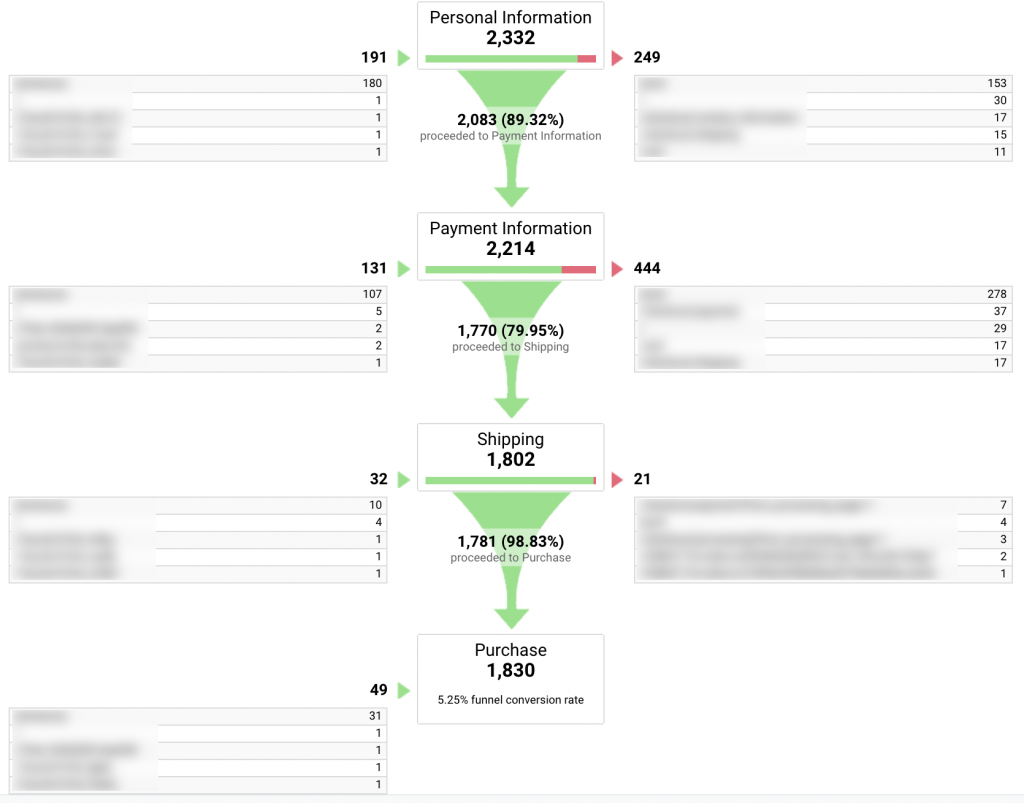Discover the Limitations of Google Analytics Goals: Revealing the Data Types That Remain Untrackable
As businesses progressively count on data-driven decision-making, recognizing the limitations of tools like Google Analytics becomes paramount. While Google Analytics Goals offer useful insights right into customer interactions, there exist data types that avoid tracking, posing obstacles to a thorough understanding of customer behavior.
Incomplete Individual Journey Tracking
Incomplete user trip monitoring within Google Analytics can prevent the capacity to precisely examine user behavior. When the customer trip is not completely tracked, there are spaces in the information that prevent a thorough understanding of how users connect with a site. This absence of understanding can bring about missed out on chances for optimization and renovations to the customer experience.
One common issue with incomplete customer trip tracking is the failure to see the full path that customers take in the past finishing a goal or leaving the site. Without this information, it is testing to recognize where customers might be coming across obstacles or friction factors that avoid them from transforming. Additionally, insufficient tracking can obscure the impact of particular advertising and marketing efforts or internet site changes on customer behavior.
To address this constraint, it is essential to establish appropriate monitoring mechanisms within Google Analytics to capture the whole user journey. This might involve establishing up occasion monitoring, objective funnels, or making use of tools like Google Tag Manager to make sure that no vital communications go unrecorded. By obtaining an extensive view of the customer journey, web site proprietors can make even more educated choices to enhance customer interaction and drive conversions.
Acknowledgment Obstacles
Navigating with acknowledgment difficulties in Google Analytics requires a comprehensive understanding of how different touchpoints add to the overall conversion procedure. Attribution challenges occur from the complexity of modern-day client journeys, where users communicate with multiple channels before converting.
One common attribution challenge is the difficulty in connecting conversions to the proper source, specifically in cases where customers communicate with numerous channels prior to converting. This can lead to mistakes in identifying which advertising and marketing initiatives are driving one of the most conversions. Additionally, cross-device tracking postures one more acknowledgment difficulty, as users typically change between gadgets throughout their trip, making it testing to track their interactions perfectly. Online marketers must carefully translate and examine acknowledgment data to make enlightened decisions and maximize their advertising and marketing methods properly.
Offline Conversions
Provided the challenges connected with attributing conversions properly in online networks, the measurement of offline conversions presents a considerable chance for marketing professionals seeking an extra comprehensive understanding of their customers' journey. Offline conversions describe activities that consumers absorb the physical globe, such as making purchases in brick-and-mortar shops or over the phone, participating in occasions, or involving with published products - what data is google analytics goals unable to track. These conversions are important for businesses that run both online and offline, as they supply important understandings into the efficiency of marketing campaigns throughout different touchpoints
Tracking offline conversions generally posed a significant challenge for marketing professionals, as it was challenging to connect these activities back to details on the internet interactions precisely. With developments in modern technology, such as the integration of CRM systems, one-of-a-kind identifiers, and voucher codes, services can now bridge the gap between online and offline information to get a more holistic sight of client actions. By properly determining offline conversions, marketing experts can enhance their approaches, allot resources extra efficiently, and eventually boost the total client experience.
Cross-Device Monitoring
Cross-device monitoring plays an essential role in comprehending the interconnected nature of customers' digital interactions across multiple devices. In today's omnichannel world, where individuals flawlessly switch between desktop computers, smartphones, and tablet computers, tracking their actions throughout these devices is vital for marketing professionals to acquire a detailed view of their customer journey.

Additionally, privacy problems and policies such as GDPR and CCPA have additionally difficult cross-device monitoring. With individuals requiring even more control over their information and boosted restrictions on monitoring modern technologies, marketing experts need to locate privacy-compliant and innovative methods to link user communications throughout gadgets.
Dynamic Web Content Engagement
Comprehending individual interaction with vibrant content is pivotal in enhancing digital advertising techniques for improved audience interaction. Dynamic content refers to website elements that change based on customer habits, preferences, or other elements, offering a tailored experience. Tracking individual interactions with dynamic material presents obstacles for conventional analytics tools like Google Analytics.
While Google Analytics can track fundamental interactions like try these out clicks and web page sights, it may struggle to catch more nuanced engagements within vibrant content. what data is google analytics goals unable to track. Metrics such as time invested in certain dynamic components, hover actions, or communications within pop-ups are commonly not quickly quantifiable making use of common tracking approaches. This constraint impedes marketers' capacity to fully grasp just how users are engaging with dynamic material and customize their techniques accordingly

Verdict
Finally, Google Analytics goals have restrictions in tracking insufficient customer journeys, connecting conversions accurately, capturing offline conversions, tracking cross-device interactions, and determining vibrant material interaction. These constraints highlight the value of checking out added tracking techniques and tools to get a much more extensive understanding of customer actions and conversions past what Google Analytics can give.
While Google Analytics Goals deal valuable understandings right into customer communications, there exist information kinds that thwart monitoring, positioning challenges to an extensive understanding of individual behavior.Incomplete user journey monitoring within Google Analytics can impede the capacity to properly examine individual behavior. When the user journey is not totally tracked, there are voids in the information that avoid a detailed understanding of exactly how users interact with a site.One common concern with insufficient user trip monitoring is the inability to see the complete path that customers take in the past finishing an objective or leaving the site. By obtaining a thorough view of the customer anchor trip, web site owners can make even more informed decisions to boost individual engagement and drive conversions.
Comments on “What Data Is Google Analytics Goals Unable to Track: Critical Information”